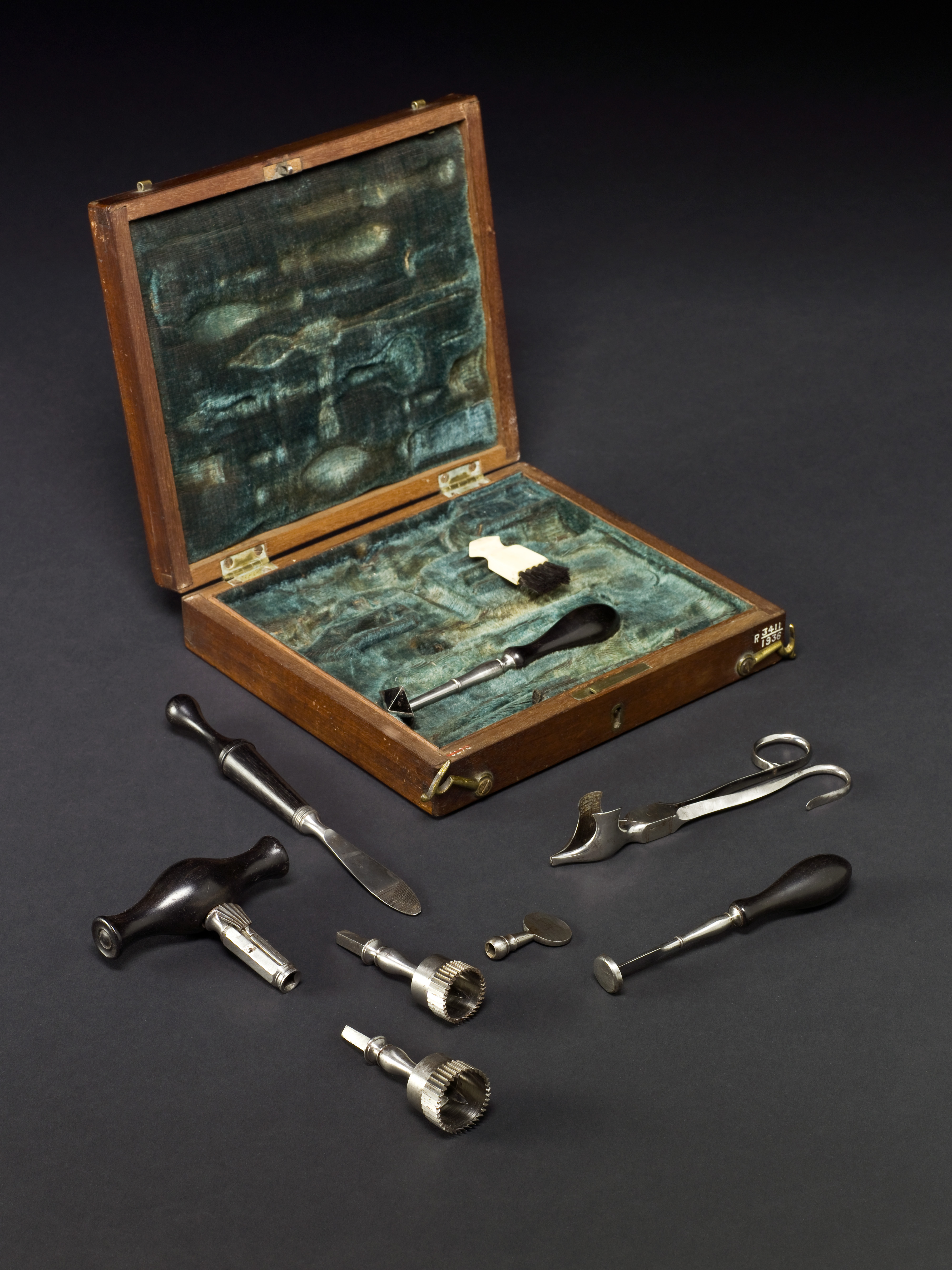When suffering from a headache or migraine most of us reach for paracetamol, or aspirin. But, would you consider removing a piece of your skull to reduce the pain?
Trephination – or trepanning- involves making a small incision, by drilling or scraping, in the skull to expose the dura mater (the outermost, and toughest, of the three membranes covering the brain and spinal cord), to treat problems related to intracranial diseases. Whilst it sounds unusual – and very uncomfortable – this is believed to be one of the oldest medical procedures, with skulls as far back as the Neolithic period showing signs of trephination.
The right tools for the job! Trephination set circa 1770-1830
In Ancient Egypt, skull scrapings were used to create potions. Both Hippocrates and Galen mentioned the procedure, and it would continue throughout the Middle Ages and into the Renaissance with many people surviving, as seen in archaeological excavations where trepanned skulls show signs of healing around the edge of the hole.
3500-years ago, this patient survived the trephination
There are several possible explanations for this procedure:
- The collection of rondelles, or skull discs (small discs used as charms or amulets to expel demons).
- By cutting the bone away, practitioners believed it would cure convulsions, headaches, infections and even fractures by ridding pressure, or removing spirits
Although disregarded by many, the practice still exists in contemporary medicine, but is used mostly for the treatment of epidural and subdural haematoma (a ruptured blood vessel between the skull and the brain.)
Some people today still have the procedure carried out, with many purporting its benefits in increased levels of consciousness or intellectual capacity.
- Would you give trephination a go if it made you extra clever?
- How do cultural or religious issues affect the treatment of pain and illness?
- In the future, what contemporary medical procedures will seem unusual?
An example of a trephination set can be seen in The Science and Art of Medicine, 5th floor, Wellcome Wing.
-Christopher Whitby

